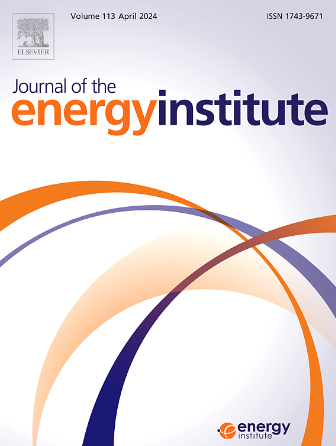Efficient upgrading of palmitic acid in supercritical conditions: Effect of metal promoters and the impact of solvents as a hydrogen source
IF 6.2
2区 工程技术
Q2 ENERGY & FUELS
引用次数: 0
Abstract
With their unique physicochemical properties and high solubility, supercritical alcohols represent effective media in the thermochemical conversion of liquid fuels and value-added chemicals from a variety of biomass-derived feedstocks. Short-chain alcohols (C1–C3) can enable hydrogenolysis of various feedstocks through in situ hydrogen supply while mitigating char formation by stabilizing reactive intermediates. However, their use is limited by excessive decomposition and high solvent consumption, issues that have been minimally explored. This study seeks to explain the role of supercritical alcohols as hydrogen donors regarding their self-reactivity, interaction with feedstocks, and conversion under catalytic and non-catalytic conditions, including pathways to by-product formation. Herein, we seek to optimize solvothermal upgrading of palmitic acid by maximizing hydrocarbon yield while conserving solvent. Optimizing the choice of solvent and addition of promoter metals can minimize consumption of solvent while increasing conversion by providing additional active hydrogen. At 325 °C, a brief 90-min reaction achieved near-complete decomposition of palmitic acid, yielding high hydrocarbon selectivity while minimizing both solvent consumption and solvent-derived by-products. Under optimum conditions, the liquid product exhibited a low O/C of 0.03, a yield of 67.53 %, and a high heating value of 45.78 MJ kg−1. The hydrodeoxygenation rate of esters to hydrocarbons increased significantly with reaction time. NiCu/AC demonstrated promising catalytic activity in esterification, hydrogenation, hydrodeoxygenation, cracking, and alkylation. Based on identified products, simplified reaction mechanisms were proposed for the supercritical upgrading of palmitic acid.
超临界条件下棕榈酸的高效升级:金属促进剂的作用和溶剂作为氢源的影响
超临界醇具有独特的物理化学性质和高溶解度,是液体燃料和各种生物质原料中增值化学品热化学转化的有效介质。短链醇(C1-C3)可以通过原位氢供应实现各种原料的氢解,同时通过稳定反应中间体来减轻炭的形成。然而,它们的使用受到过度分解和高溶剂消耗的限制,这些问题很少被探讨。本研究旨在解释超临界醇作为氢供体的作用,包括其自反应性、与原料的相互作用以及在催化和非催化条件下的转化,包括副产物的形成途径。在此,我们寻求优化棕榈酸的溶剂热升级,以最大限度地提高碳氢化合物产量,同时节省溶剂。优化溶剂的选择和添加促进剂金属可以减少溶剂的消耗,同时通过提供额外的活性氢来提高转化率。在325°C下,90分钟的反应几乎完全分解了棕榈酸,产生了高碳氢化合物选择性,同时最大限度地减少了溶剂消耗和溶剂衍生副产物。在此条件下,液相产物的O/C低至0.03,产率为67.53%,热值高达45.78 MJ kg−1。随着反应时间的延长,酯制烃的加氢脱氧速率显著提高。NiCu/AC在酯化、加氢、加氢脱氧、裂化和烷基化反应中具有良好的催化活性。在鉴定产物的基础上,提出了棕榈酸超临界提质的简化反应机理。
本文章由计算机程序翻译,如有差异,请以英文原文为准。
求助全文
约1分钟内获得全文
求助全文
来源期刊

Journal of The Energy Institute
工程技术-能源与燃料
CiteScore
10.60
自引率
5.30%
发文量
166
审稿时长
16 days
期刊介绍:
The Journal of the Energy Institute provides peer reviewed coverage of original high quality research on energy, engineering and technology.The coverage is broad and the main areas of interest include:
Combustion engineering and associated technologies; process heating; power generation; engines and propulsion; emissions and environmental pollution control; clean coal technologies; carbon abatement technologies
Emissions and environmental pollution control; safety and hazards;
Clean coal technologies; carbon abatement technologies, including carbon capture and storage, CCS;
Petroleum engineering and fuel quality, including storage and transport
Alternative energy sources; biomass utilisation and biomass conversion technologies; energy from waste, incineration and recycling
Energy conversion, energy recovery and energy efficiency; space heating, fuel cells, heat pumps and cooling systems
Energy storage
The journal''s coverage reflects changes in energy technology that result from the transition to more efficient energy production and end use together with reduced carbon emission.
 求助内容:
求助内容: 应助结果提醒方式:
应助结果提醒方式:


